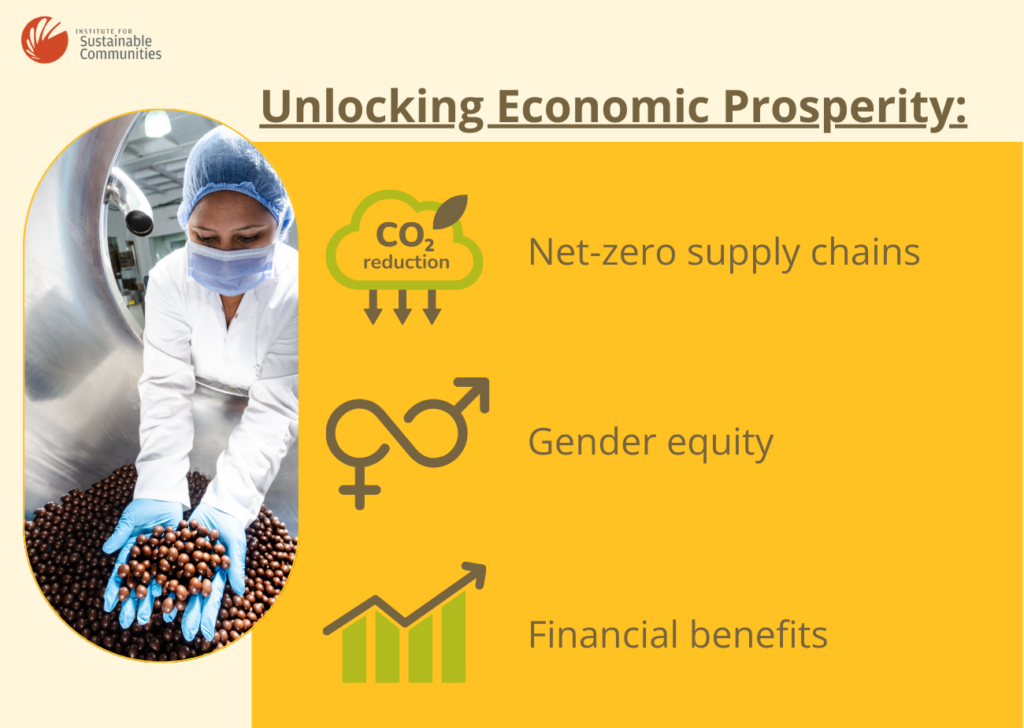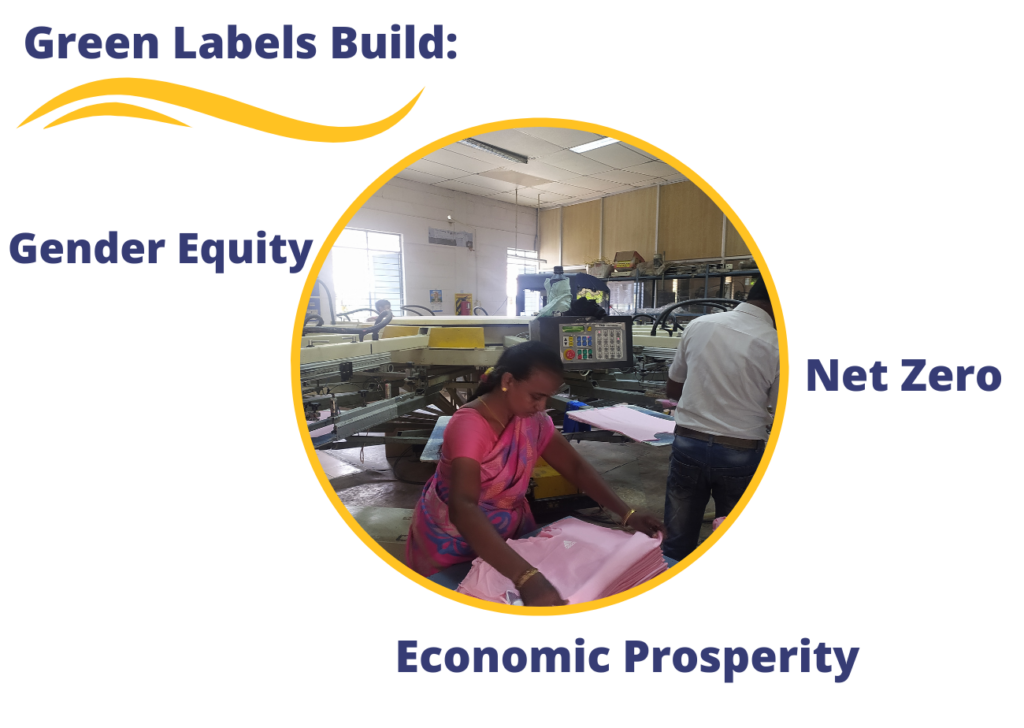The race is on! Businesses and nations are sprinting towards net-zero commitments, fueled by the urgency of climate action. But in this sprint, are we leaving half the runners behind? This blog dives into the exciting potential of market-based solutions to achieve not only decarbonization, but also gender equity within our supply chains.
Untapped Potential
We live in a world where tackling climate change can unlock economic prosperity and empower women. Research shows addressing global gender equity could boost the world economy by a staggering $12 trillion. In developing nations like India, where only 12% of female workers grace factory floors, harnessing this untapped potential is crucial. Decarbonization, with its need for upgraded systems, presents a critical opportunity to intentionally embed gender equity.

From Insights to Action
Our extensive outreach to hundreds of businesses across diverse industries revealed two key “aha” moments:
- Business cases matter: Just like solar panels became economical, businesses need to see the financial benefits of green growth and hiring the untapped women’s workforce. Show them reduced costs, lower attrition, and fewer errors, and the equation becomes compelling.
- Data is power: Robust data collection is sorely missing, hindering progress. We need robust monitoring and accountability to track both decarbonization and gender equity gains.
The Gender-Equitable Green Label

The voluntary gender-equitable green standard and label is a market-based approach which highlights businesses committed to both low-carbon operations and gender equality. Empowered by this label, consumers can make informed choices and foster a cleaner environment and dismantle structural inequities. Think Better Cotton Initiative (BCI) or Forest Stewardship Council (FSC), but for gender-equitable, green practices.
Labeling Standards Build Trust and Impact
The growth of eco-friendly labels like Star Label shows a rising market demand for sustainable products. But “greenwashing” concerns loom large—to ensure credibility, a transparent and inclusive framework is essential, built through multi-stakeholder consensus. This framework should be dynamic, adapting to the diverse approaches existing today.
How to Create a Successful Labeling Standard
● Put people first: Don’t rely solely on data. Understand women’s aspirations and preferred sectors to make the label resonate.
● Localize the approach: Align with local laws and cater to specific regional contexts.
● Anticipate pitfalls: Address potential issues like “gender washing” and unintended consequences.
● Measure and improve: Build a robust monitoring and evaluation system from the start.
● Explore mandates or compliance markets: Consider their effectiveness alongside voluntary approaches.
● Engage financiers: Leverage their power to drive adoption, especially among smaller businesses.
● Include all voices: Foster stakeholder inclusivity – civil society, government, women’s groups, and businesses.
● Transition to gender-neutral: Move from female-focused to gender-neutral policies for long-term inclusivity.
● Build on existing systems: Consider integrating gender standards into existing zero-emission frameworks for wider adoption.
